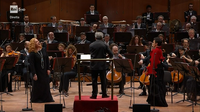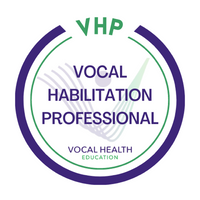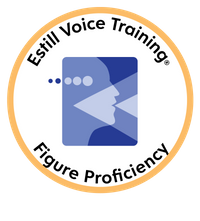Peter Hess® Sound Massage
What exactly is sound massage using singing bowls?
Sound massage is primarily a holistic relaxation method. Generally speaking, sound massage means that certain singing bowls are positioned on and/or around the dressed body and gently struck using different felt mallets. This creates a sound space which really embraces the client. The harmonic sounds calm the mind, the smooth sound vibrations gently stimulate the body – immediately providing for pleasant relaxation. Thoughts come to rest, tensions are relieved gently.
In combination with an attentive, appreciative and facing attitude of the sound massage practitioner, regeneration at all levels is possible. Of course, within the framework of sound massage for relaxation it is also possible to individually address certain desires or needs. This may be e.g. a special relaxation offer for the back or also mental support (e.g. for exam preparation).
Peter Hess and the development of sound massage
Sound massage was developed in 1984 by Peter Hess who formerly worked as a graduate engineer for physical engineering and vocational trainer for electrical engineering and politics. The illness of a close family member induced the rather rationally oriented engineer more than 30 years ago to deal with alternative treatments. This caused him to travel to Nepal for one year of research and later also to further trips through India and Tibet.
Above all in Nepal he learned a lot about traditional healing methods and about the meaning of music within the framework of healing and ritual life of the Newar – the oldest ethnic group in the Kathmandu Valley. During this time, he also came across the bowls of bronze with their extraordinary sound for the first time. From all the experience gained he had the idea that the sounds of singing bowls might be ideally suitable for making the pleasant effect of music and sounds available to people in the western world – in an easy and gentle manner. From all the experience gained he had the idea that the sounds of singing bowls might be ideally suitable for making the pleasant effect of music and sounds available to people in the western world – in an easy and gentle manner.
Meanwhile, sound massage is taught according to a stipulated curriculum at the Peter Hess® Institute (PHI) in Germany and at Peter Hess® Academies in more than 20 countries all over the world.
In the process, the training certified by the Europäischer Fachverband Klang-Massage-Therapie e.V. (European Professional Association for Sound Massage Therapy) complies with the high quality and ethics guidelines of the umbrella organization for consulting and health supporting professionals.
Since 2013, PHI graduations have been certified by the Steinbeis-Transfer-Institute Health Competence and Health Education of the academy Steinbeis-Hochschule Berlin. In cooperation with Steinbeis-Hochschule Berlin, the bachelor degree programme Complementary Methods with the discipline Sound Resonance Method is offered.
The increasing recognition of this method is not least due to the research work gained during the past ten to fifteen years.
Peter Hess® Therapy Singing Bowls
Of course, the positive effect of the sound of singing bowls considerably depends on the quality of the singing bowl.
It requires a singing bowl with a harmonious and wide sound spectrum, with the sound being supposed to fade smoothly and if possible persistently.
When in 1984 Peter Hess started to purposefully apply sounds for relaxation, he still found bowls suitable for these purposes on his trips through Nepal and India. However, this became increasingly difficult so that in 1989 he started to deal with the production of singing bowls. After lots of research work and experiments he succeeded in starting to produce new singing bowls according to ancient tradition. Today, the bowls of Peter Hess® production are ideally tailored to the requirements of sound massage. He managed to establish certain “standardizations “, i.e. there are certain types of bowls – depending on their respective characteristic sound and vibration behavior they respond particularly well to different body regions.
Dr. Helina Portalska and Dr. Marek Portalski of the Technical Univerity in Posen/Czechia have carried out various investigations to that end.
Because our body does not show the same resonance behavior anywhere in the body. For example, the socalled “pelvic bowl“ was developed for the abdomen since its deep sounds respond particularly well to this body region whereas the higher sounds of the “heart bowl“ above all respond to the upper body. The sound spectrum of the so called “universal bowl“ in turn is designed very broadly, enabling to respond to the entire body – it is a classic “bowl for beginners“.
Since every singing bowl is a unique object, also the quality is not always the same either. Therefore, the bowls are classified in different quality levels depending on the behavior of the sound vibration. For professional sound work, socalled Peter Hess® Therapy Bowls are exclusively applied.
Perceiving sounds – Effects
Vibrations of a singing bowl spread as sound, on one hand audible via the ears, on the other perceptible via the body.
Maybe you have stood already in front of large loudspeakers (e.g. in a discotheque), where you probably clearly recognized the sound pressure.
Accordingly, a singing bowl does not necessarily need to stay on the body for its vibrations to take effect. It is also possible to strike the singing bowl in the surrounding area, their vibrations even reach us in sound meditations or at concerts.
Interestingly, hearing and feeling belong to the senses prenatally fully matured. Already as an unborn baby we collect first experience about ourselves and our environment via hearing and feeling. It is also exciting that the monotonous, uniform sound structure of singing bowl sounds is similar to the sounds heard by an unborn in the womb – the heartbeat of the mother, roaring of her blood, her digestion…
Maybe this explains why sounds appear intimate to many people from the very beginning and people report that during sound massage (and even afterwards) they noticed feelings of trust, confidence and faith. And this could also be the reason for people who are no longer or just restrictedly capable of falling back on their cognitive skills – such as mentally disabled persons, neurological patients or people with dementia – often react surprisingly positive on sound.
The effect of audible sound
Harmonious sounds usually lead into pleasant relaxation quite quickly. This is inter alia due to the partly very slow vibrations of singing bowls.
They favour the development of slow brain frequencies as coming along with states of relaxation.
This was proved by Dr. med. Kerstin Gommel (today: van den Dool) in an investigation in 2009 about the neuronal effect of sounds which she carried out during a sound massage intensive training and three months later during the final supervisory seminar.
During sound massage and also in short sound exercises she observed typical physical and mental relaxation responses such as for example slowdown of breathing frequency and heart rate or the shift of attentiveness from the outside to the inside as well as an enhanced associative thinking (inner images).
Moreover, sounds perceived pleasantly activate the endogenous reward system – joy and feelings of happiness are activated, such as e.g. also after sports or enjoying chocolate, …. This is certainly a further reason for many people feeling so well during sound massage or perceiving sound practice so pleasant.
At the same time, the consistent gentle sound vibrations or rather sound waves set noticeable pulses as potentially already perceived also by those already having experienced a singing bowl on their hand.
Sound & water
Sound needs a key medium such as air or water for being able to spread. In water, it spreads particularly quickly (cp. whales can communicate with each other by singing via up to 40 km).
Realizing our body consists of about 70% of water we understand quickly why the body is so susceptible to sound.
Accordingly, during sound massage our body responds sensitively to sound.
One can easily imagine how the harmonious, consistent, rhythmical impulses of the singing bowl take effect on the body. The body resonates with sound, i.e. it “responds” by starting to vibrate. It is as if sounds are “tuning“ us like an instrument, bringing us into order, supporting us in getting in tune again – and this in a completely real sense.
The effect of perceptible sound vibrations
On one hand, we perceive sound via the skin and on the other hand via the muscles, tissues and organs (this is called exteroception and interoception). Like a stone, which is thrown into a lake, causes concentric waves and bring the entire water into motion, the same happens to our body. The sound vibrations bring the body tissues, all organs, muscles, body cavities and body fluids into a very subtle motion, which clients also describe like a kind of a “cell massage “.
The subtle vibrations effect a relief of the mesh tension and have a regulating effect on our skeletal muscles, but also on the diaphragm and larynx (this is why sound is so successfully applied in speech therapy).
Moreover, they promote blood circulation and stimulate metabolism. They also have a relaxing effect on our abdominal organs, which is why they should be applied in case of digestion problems or menstrual problems.
Central research
The positive effects of Peter Hess® Sound Massage are proven by various research work. In the following:
Peter Hess® Basic Sound Massage as a method of stress management and its effects on the body
An investigation of the Europäischer Fachverband Klang-Massage-Therapie e.V. with more than 200 test persons carried out in 2009 has proven that regular sound massage demonstrably contributes to being able to better cope with stress and to feel more comfortable in one’s own body.
In the following please find some clients‘ comments with individual case documentation, reflecting frequently mentioned effects
- “Just thinking of sound massage relaxation already starts.“ Typical effect of conditioning which is also observed in case of regular sound exercises (self-application) .
- I get upset only rarely now, suffer fewer headaches and feel much more relaxed“.
- After a long time I finally felt again comfortable in my body“.
A statement given again and again particularly when working with patients suffering pain. This positive body experience can also be applied for changing the focus: Away from the problem/illness and focusing on the well-functioning / healthy. This makes sound massage so valuable for complementing recovery / change processes.
Neuronal effects of Peter Hess®- Sound Massage
As mentioned previously already, the relaxing effect could also be confirmed by Dr. med. Kerstin Gommel (today: van den Dool) in her investigation on neural effects of sound massage. Her results do not only prove the relaxing effect of sound but also provide indications why sound can com-plement learning processes effectively.
Sound & Cells
In 2009, the cell biologist Mag. Dr. Maria Anna Pabst of the University Graz carried out a cell examination and found first scientific indications for a “vitalizing“ effect of sound. The examination of cells in cell culture vessels regularly sounded, revealed that sounded cells in comparison with the control group divided more powerfully and a slight decrease in the mortality rate.
So, sound massage can also ideally complement traditional medical treatments as an invitation for relaxation for many stress-related symptoms.
Pilot study: Sound massage for hypertonic patients
For example, Dr. med. Jens Gramann of the cardiac practice Berlin applies sound massage as treatment for hypertonic patients. In a pilot study, he was able to prove an antihypertensive effect. Interestingly, in the sound group it was considerably stronger than in a second group which obtained progressive muscle relaxation.
Examinations relating to a “sound break“
The effects presented do not apply to sound massage only, but also to sound exercises which everyone can do for oneself.
Four examinations of the couple Professor Hella and Professor Luis Erler of Regensburg revealed that already short sound exercises between two and five minutes’ duration have positive effects. The term „sound break“ characterized by them in this context means such short exercises applied regularly and systematically (ideally one exercise three times a day).
The different examinations could prove positive effects in both children and adults in regard to:
- Relaxation
- Wellbeing
- Endurance
- Concentration
- Motivation and
- Creativity
Possible objectives
All these manifold effects of Peter Hess® Sound Massage enable versatile applications. Possible objectives may be:
- Good health
- Stress relief / prevention
- Improvement of sleeping behaviors
- Relaxing tensions
- Stimulation of blood circulation (cold hands/feet)
- Stimulation of metabolism and digestion
- Alleviation of pain
- Promotion of body perception
- Strengthening self-confidence and zest for life
- Activation of self-healing powers“
from: Vortrag: Die Peter Hess-Klangmassage
© Europäischer Fachverband Klang-Massage-Therapie e.v., 6 - 2016
Photos Copyright: Europäischer Fachverband Klang-Massage-Therapie e.V.
https://www.peter-hess-institut.de/kontakt-international/
https://www.peter-hess-klangdesign.de/




